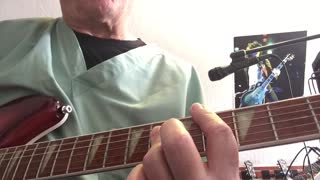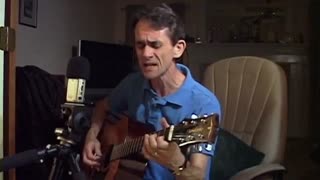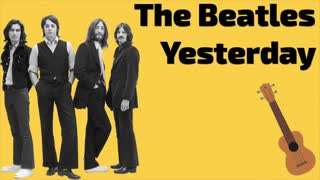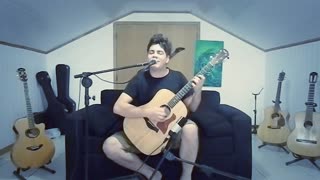Premium Only Content

THE BEATLES - ELEANOR RIGBY (COLOURED)
On June 6th in 1966, THE BEATLES completed the recording of ELEANOR RIGBY
Released simultaneously on August 5, 1966 on both the album Revolver and as a double A-side with "Yellow Submarine," Paul McCartney wrote most of this song. He got the name "Eleanor" from actress Eleanor Bron, who appeared in the 1965 Beatles film Help!.
"Rigby" came to him when he was in Bristol, England and spotted a store: Rigby and Evens Ltd Wine and Spirit Shippers. He liked the name "Eleanor Rigby" because it sounded natural and matched the rhythm he wrote....
Hello, and a warm welcome to COLOURING THE PAST.
Running this channel is a one-man operation. I write and research the articles, and edit the videos which involves several hours of work - upscaling, colourising and tweaking in various software. If you could subscribe and share the video it would be a great help for me to keep the channel running.
McCartney explained at the time that his songs came mostly from his imagination. Regarding this song, he said, "It just came. When I started doing the melody I developed the lyric. It all came from the first line. I wonder if there are girls called Eleanor Rigby?"
McCartney wasn't sure what the song was going to be about until he came up with the line, "Picks up the rice in a church where a wedding has been." That's when he came up with the story of an old, lonely woman.
The lyrics, "Wearing the face that she keeps in a jar by the door" are a reference to the cold-cream she wears in an effort to look younger.
The song tells the story of two lonely people. First, we meet a churchgoing woman named Eleanor Rigby, who is seen cleaning up rice after a wedding. The second verse introduces the pastor, Father McKenzie, whose sermons "no one will hear." This could indicate that nobody in coming to his church, or that his sermons aren't getting through to the congregation on a spiritual level. In the third verse, Eleanor dies in the church and Father McKenzie buries her.
"Father Mackenzie" was originally "Father McCartney." Paul decided he didn't want to freak out his dad and picked a name out of the phone book instead.
A string section scored by Beatles producer George Martin consisting of four violins, two violas and two cellos were used in recording. Paul may have been inspired by the classic composer Vivaldi.
Paul McCartney recounted this song's origin story in a 2018 interview with GQ. He said: "When I was really little I lived on what was called a housing estate, which is like the projects - there were a lot of old ladies and I enjoyed sitting around with these older ladies because they had these great stories, in this case about World War II. One in particular I used to visit and I'd go shopping for her -you know, she couldn't get out. So I had that figure in my mind of a sort of lonely old lady.
Over the years, I've met a couple of others, and maybe their loneliness made me empathize with them. But I thought it was a great character, so I started this song about the lonely old lady who picks up the rice in the church, who never really gets the dreams in her life. Then I added in the priest, the vicar, Father McKenzie. And so, there was just the two characters. It was like writing a short story, and it was basically on these old ladies that I had known as a kid."
In Observer Music Monthly, November 2008, McCartney said: "These lonely old ladies were something I knew about growing up, and that was what 'Eleanor Rigby' was about - the fact that she died and nobody really noticed. I knew this went on."
There is a gravestone for an Eleanor Rigby in St. Peter's Churchyard in Woolton, England. Woolton is a suburb of Liverpool and Lennon first met McCartney at a fete at St. Peter's Church.
The gravestone bearing the name Eleanor Rigby shows that she died in October 1939, aged 44. However Eleanor was not like the lonely people in McCartney's song, as she was married.
Another of the gravestones there has the word "McKenzie" written on it. McCartney has denied that that is the source of the names, though he has agreed that they may have registered subconsciously.
This was originally written as "Miss Daisy Hawkins." According to Rolling Stone magazine, when McCartney first played the song for his neighbour Donovan Leitch, the words were "Ola Na Tungee, blowing his mind in the dark with a pipe full of clay."
Because of the string section, this was difficult to play live, which The Beatles never did. On his 2002 Back In The US tour, Paul McCartney played this without the strings. Keyboards were used to compensate.
-
 9:36
9:36
Rockinpapa
4 years ago $0.01 earnedDaytripper-The Beatles
150 -
 2:16
2:16
kzvx
3 years ago $0.06 earnedBlackbird - The Beatles (cover)
73 -
 4:21
4:21
WXYZ
3 years agoEdsel & Eleanor Ford House expands
20 -
 0:18
0:18
EleanortheGreat
4 years agoEleanor hungry!!
67 -
 2:00
2:00
Acoustic Covers by ChrisK
4 years ago $0.04 earnedYesterday - a Beatles Acoustic Cover
189 -
 1:34
1:34
Cyrus Saladin Ming
4 years ago $0.04 earnedPop Song 15 'Yesterday' Beatles 1965
234 -
 1:41
1:41
RCCR1987
4 years ago $0.06 earnedThe Beatles - Blackbird
4502 -
 14:24
14:24
AlaskanBallistics
13 hours ago $0.15 earnedMDT HNT26 Chassis on A Remington 700 7mm Remington Magnum
31K7 -
 13:34
13:34
T-SPLY
9 hours agoCNN Is Now Accusing Trump Staff Of War Crimes
52.9K23 -
 1:33:25
1:33:25
2 MIKES LIVE
9 hours ago2 MIKES LIVE #199 Deep Dive Monday!
41.5K5